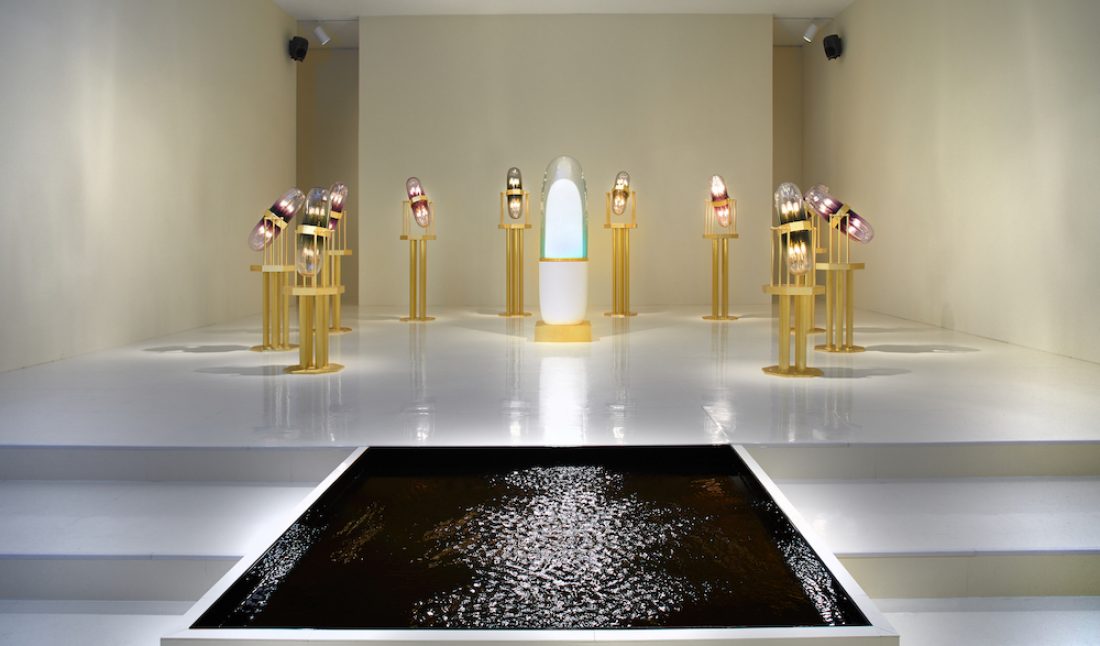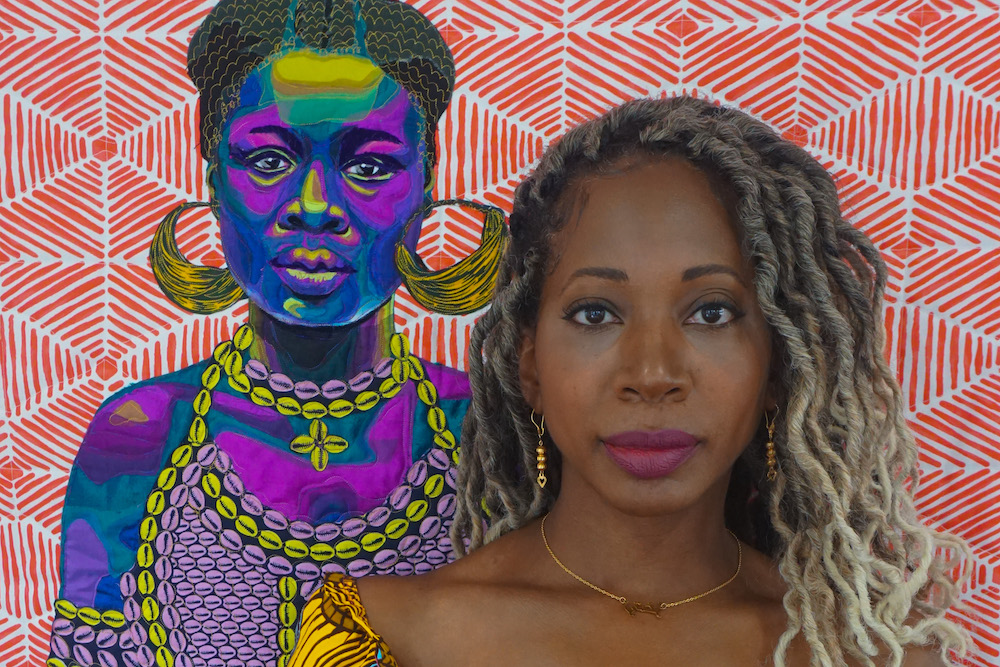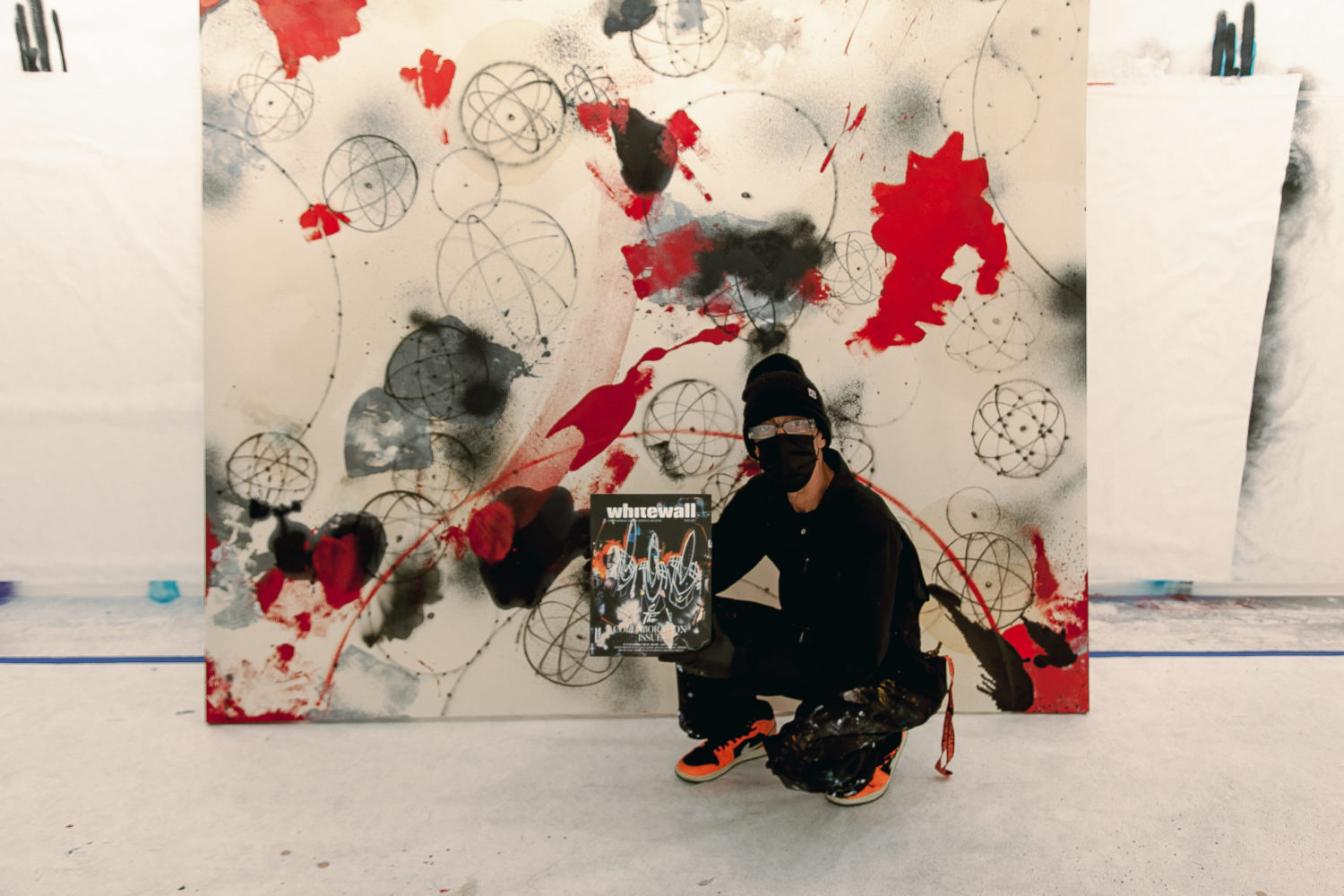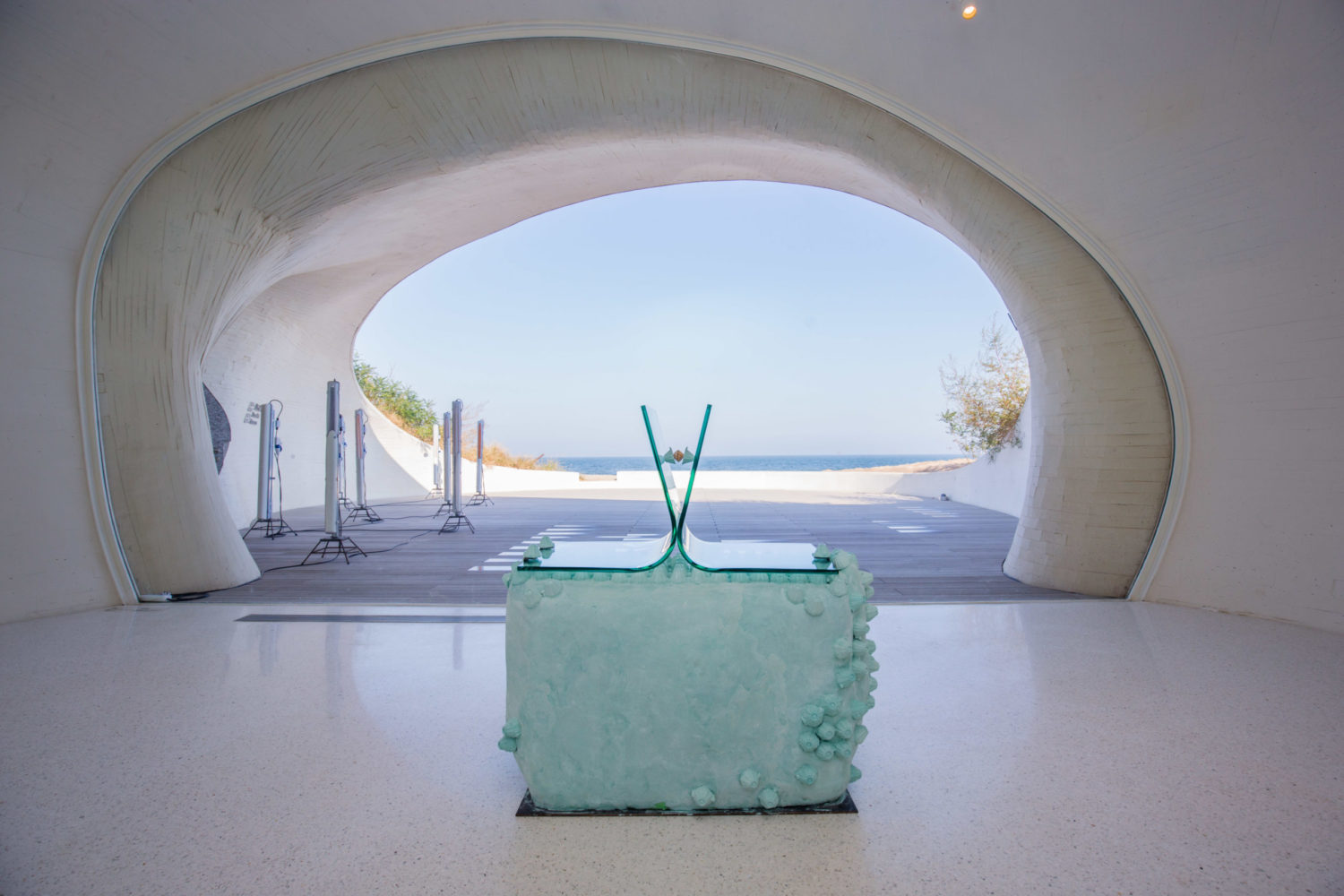Ini Archibong creates from a cockpit of sound, light, color, and form. As he moves between a drum machine, mixer, iMac, and desktop, he designs in a heightened state of consciousness. There’s a transformative, almost transcendent character to his projects—most overtly in collections like “Below the Heavens” for Sé, as well as his theoracle installation that offered a collective experience via an immersive, interactive synthesizer, but also in the more subtle details of the shape of objects like the watch Galop d’Hermès. Its curves come from his ability to be present in the moment and understand the immense history of design that precedes him.
Archibong knew he was meant to have an impact. Naturally drawn to making and building things, with a nod toward escapism, he has funneled his innate ability to express emotion through space. His work is currently on view at Friedman Benda in New York in the show “What Would Have Been,” on view through December 12.
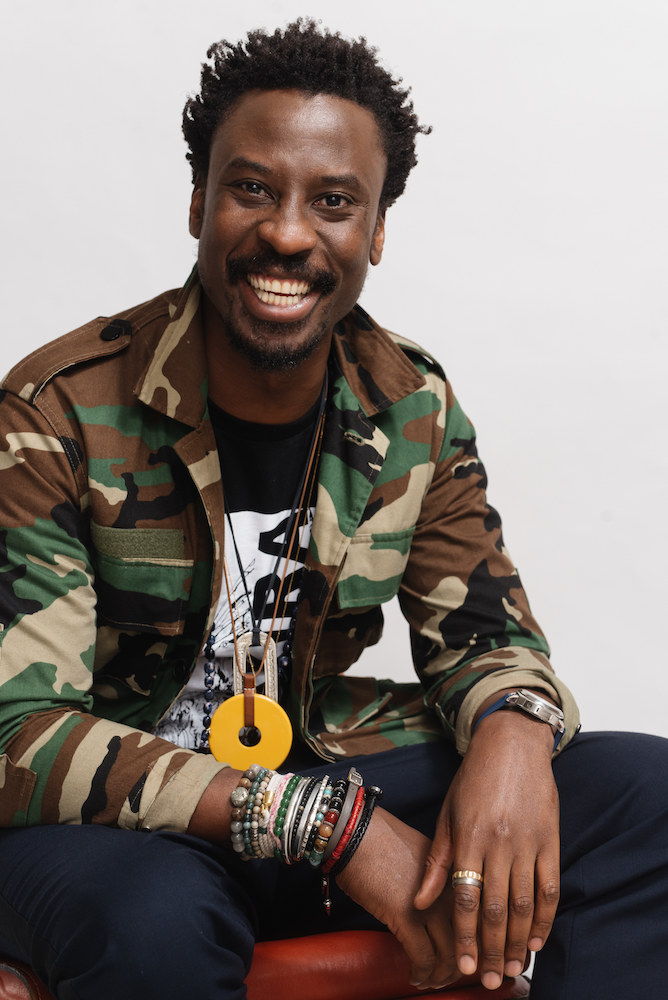 Photo by Nick Glover, courtesy of the Dallas Museum of Art.
Photo by Nick Glover, courtesy of the Dallas Museum of Art.
Whitewall spoke with the Switzerland-based designer about diving into the archives of heritage houses, as well as embarking on a new studio concept, LMNO.
WHITEWALL: Early this summer we saw your proposal of an African Diaspora pavilion for the London Design Biennale. How are you approaching that?
INI ARCHIBONG: It is my first project of this kind. Over the years I’ve touched down with enough people in various industries and roles, and all of my friends are coming to my aid to help me make this a reality. We decided to initiate LMNO, a studio concept that was my thesis at ArtCenter in 2012.
The process will be iterative. For all of my projects, I have a vision in my head as I gather more information and it evolves based on materials available, manufacturers, constraints. Because we want to hear from the voices of diaspora and let that influence what we’re going to do, we’re planning to be public with our process on Instagram, a website, and a newsletter. We’re going to allow people to see all the steps of the design.
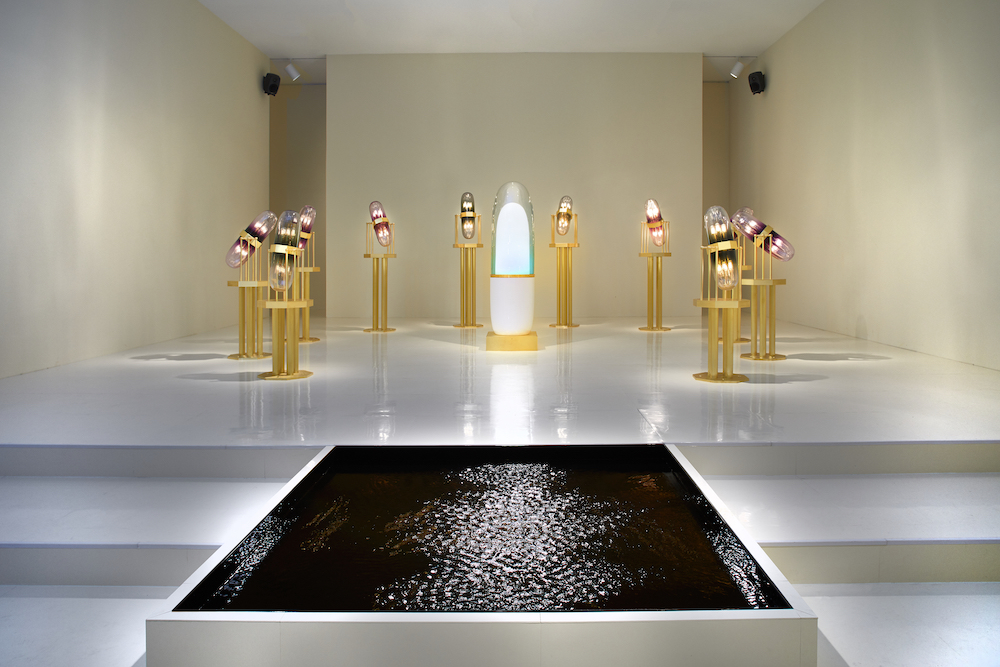 Installation view of “speechless,” photo by John Smith, courtesy of the Dallas Museum of Art.
Installation view of “speechless,” photo by John Smith, courtesy of the Dallas Museum of Art.
WW: That’s very collaborative!
IA: We’re hoping. I’ve never seen this done. Our intent is to see how collaborative something like this could be. LMNO stands for “leave my name off.” The whole idea is to create more of a village model for a studio than a typical top-down model—a more equitable model where everybody is involved and contributes without boundaries of creative expression. There will be music, visual art, all these things that can go into it.
This is the beginning of doing more spatially minded structures, which was my original training—architecture and environment design. Any time you put up a structure, you are making a statement of what you deem of value in that community. We’re hoping this model will lead to an approach that will take into consideration community input for anything we’re creating.
WW: Last year, you participated in your first museum exhibition, in “speechless: different by design” at the Dallas Museum of Art. Your installation involved sound, light, performance, design. What kind of experience did you want to facilitate for visitors?
IA: It started off with thinking about the concept of synesthesia and the idea of superpowers that people call handicaps or abnormalities. Synesthesia is such a spectrum. I’m on the spectrum like a lot of creatives, in that anything you see, feel, or hear has different implications beyond a single sensory experience. The idea that your senses are a permeable membrane for the rest of the universe around you is something that makes us all on that spectrum of synesthesia.
I was thinking about how to translate my experience into a space where other people could experience it. The things that came into play were sound, light, and color, and form. When I go through a process of designing something or making beats, I do it from this cockpit where I have drum machines, sampler, sequencer, laptop, iMac, and a desktop computer. I float seamlessly from Photoshop to making a beat to making a 3-D model, starting a rendering. Having that experience of touching pads and hearing a sound immediately and having the lights on machine respond, all of that came into what I was thinking I wanted to deliver as an experience to people.
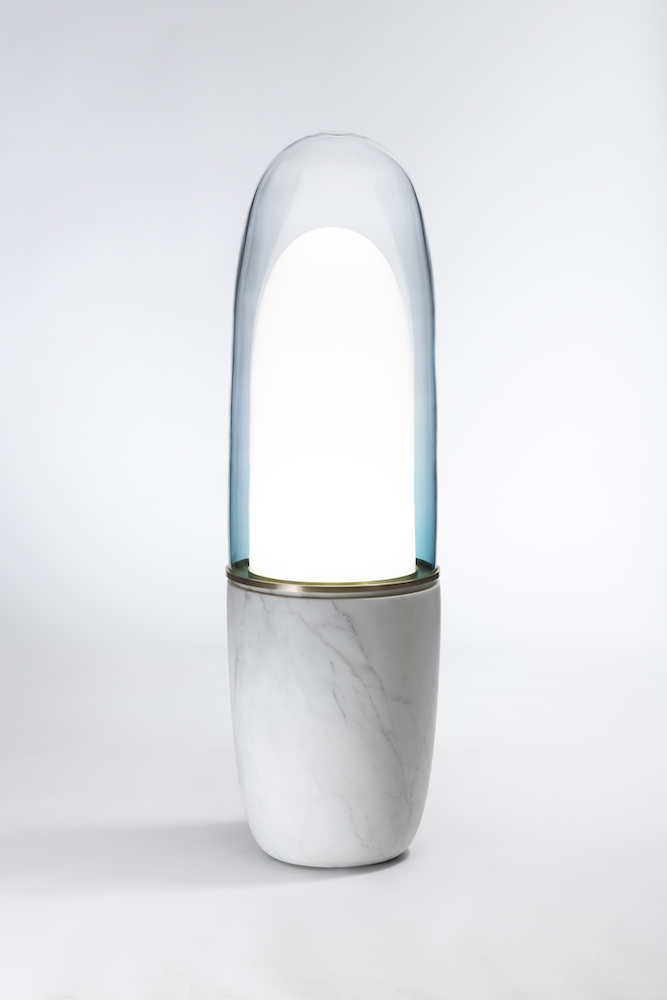 Ini Archibong, Obelisk, courtesy of Friedman Benda.
Ini Archibong, Obelisk, courtesy of Friedman Benda.
WW: How did you translate that experience into the installation, theoracle?
IA: We actualized another dream of mine, to build a large-scale synthesizer. The idea was to build a modular synthesizer where each of the sculptures controlled a different parameter of that synth, and make the experience of manipulating the synth a much more immersive experience. Like when you see a synth panel and there are a bunch of knobs, each sculpture is a knob, turning a crystal orb, with lights glowing and pulsing inside as sound changes in the room.
You step into theoracle, ask a question, and you leave with the faith that you are going to receive a response. The idea was that when you step into theoracle, you come with all the questions and things weighing on you, and you hear this sound in this reverent space, and the tone puts you in a certain state.
That multiple people are asking different questions of the oracle at the same time and you’re receiving this mass weight in sound all at once is a metaphor for daily life and coexisting with the rest of humanity.
WW: You live in Switzerland and have collaborated with a few watch brands like Vacheron Constantin and Hermès. How did you get into watches?
IA: I’ve been into watches for a long time. I saved up to buy a fake Tag Heuer when I was 14 years old. Fast forward to being in high school or college, my older brother was a professional basketball player, and I remember he had just bought a Breitling, and then a Panerai. And I became obsessed when I saw his Panerai. Then I dug deeper into the design side of watches. Even before I moved to Switzerland, I already made contact with couple of people I looked up to.
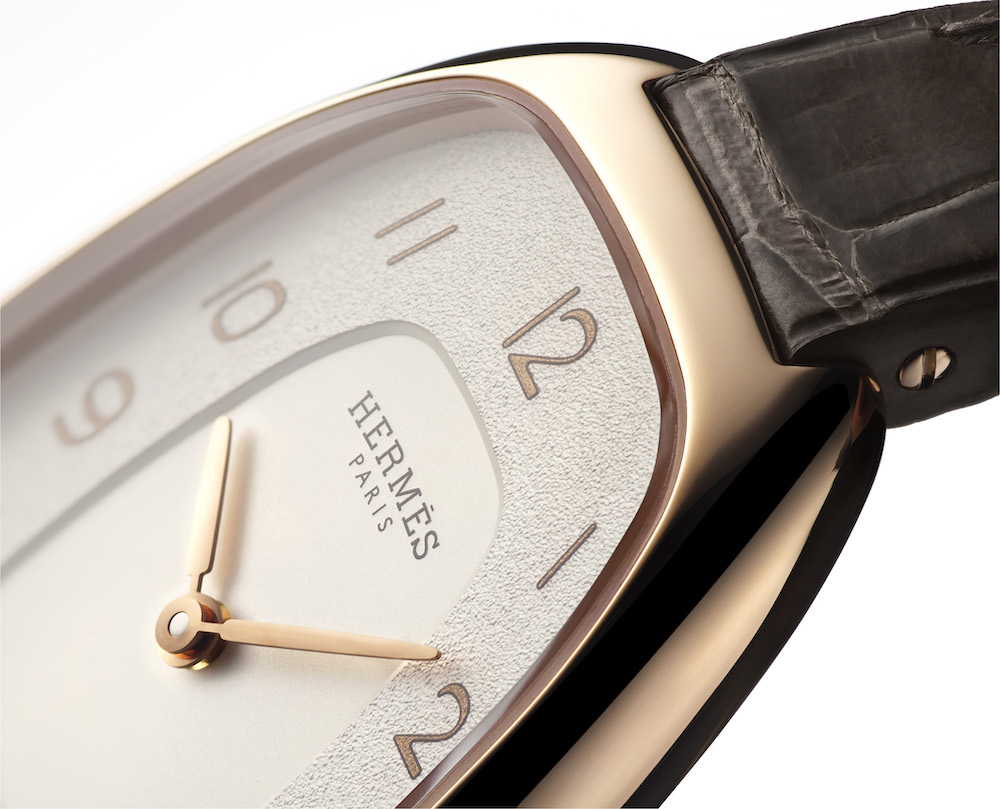 Galop d’Hermès, courtesy of Ini Archibong.
Galop d’Hermès, courtesy of Ini Archibong.
WW: The Galop d’Hermès you designed feels like it should already have existed within their collections. What was your approach there?
IA: That was the goal. I approach everything that way, even working with Knoll, I would hope that when those products come out, that people have the same feeling, “Hasn’t this been in the catalogue for a while?”
My goal is to be a vessel more than anything else. So I have all of the acquired skills that allow me to have my own rendition of their immense history. It’s almost disingenuous to take too much credit, because, let’s just keep it really honest, if I wasn’t designing a watch for Hermès, I wouldn’t have come up with that shape because why would I ever be inspired by a stirrup? I recognize that I have developed these skills and I’m pretty good at what I do, but without having a house like that for inspiration, a client with a deep history to build off of, these products wouldn’t be as wildly heralded. My approach and love for the brand helps because I’ve already been analyzing certain aspects of what makes them them. You pick up on what you need to make something fit.
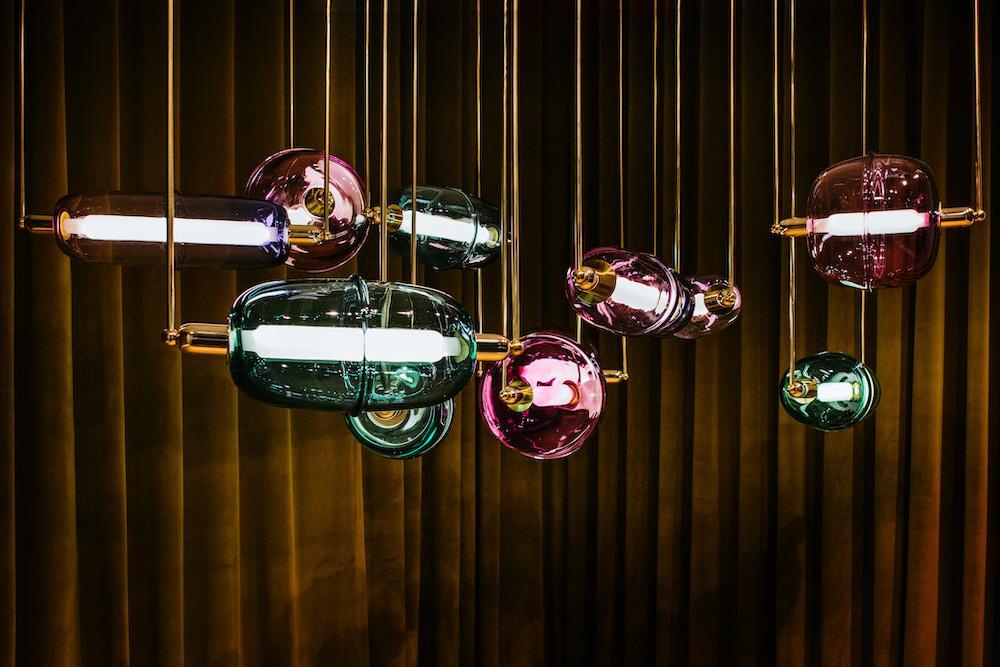 Below the Heavens collection for Sé, courtesy of Ini Archibong.
Below the Heavens collection for Sé, courtesy of Ini Archibong.
WW: We read that you did pottery. Might we see that in a future project?
IA: I haven’t done it in a long time. I know if I sat down on a wheel I could throw something. I wouldn’t be able to do it at the level I was at. I started when I was 12 and, like everything else, if you know that, then my form language makes a lot of sense. When you throw on the wheel you’re working on one side of the wheel and it’s all about subtlety of curvature. With all my work I’m pretty anal about all of the subtle moves of the curves. Even something that looks like a silhouette of a shape, like the watch, it might appear pretty simple and that’s the goal. But those curves are very meticulously controlled. And that comes from working on the wheel.
You have to be completely in the moment. Your hands are on opposite sides of the clay but they are connected and you can feel how they are. When you’re pulling the walls, to do that well, you have to exist in the space in between your fingers. You have to be locked into that continuous series of moments.
Being in that moment and in the flow applies to the way that I work. My design process is pretty strange. I try to design in the flow state and it has its ups and downs.






